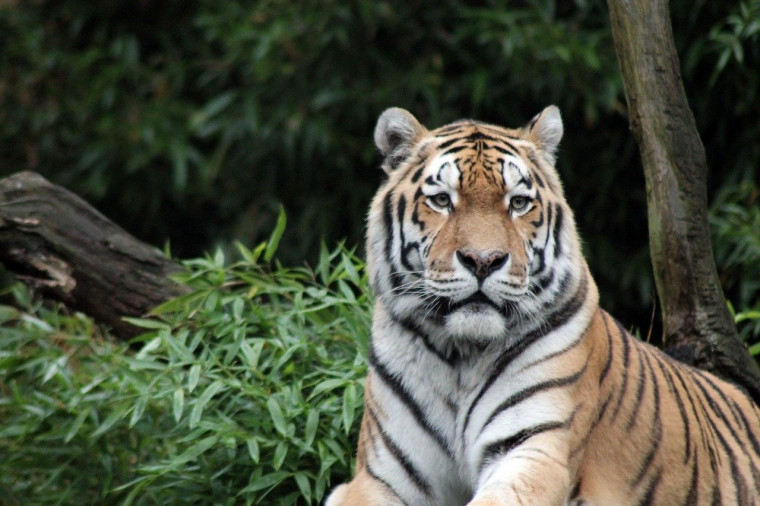Big News for Big Cats
Big cats are in peril. A new federal law and our work to keep big cats in the wild aim to alleviate the crisis.
Open gallery

In a historic win for America’s captive big cats, the Big Cat Public Safety Act was signed into law in December. This blog addresses why big cats are in peril, provides an overview of the new law, and shares how our Global Law Alliance for Animals and the Environment (GLA) is working to keep big cats in the wild, where they belong.
Captive Big Cats
As discussed in our prior blogs, the US has a well-documented big cat problem. Using tigers as one example, an estimated 5,000-15,000 tigers live in captivity in the U.S., while fewer than 4,000 tigers remain in the wild. The existence of a large number of captive-bred tigers may give the impression that the species is thriving as a whole, but that is not the case. Globally, tigers are listed as endangered on IUCN’s Red List of Threatened Species, with two sub-species listed as critically endangered.
Captivity is highly detrimental to the welfare and well-being of the individual animals. A key impetus behind the captive big cat industry is exhibition, especially of cubs for photo-ops. Cubs are removed from their mothers early to promote handling. A recent study examined the stress responses of lion cubs handled by tourists in South Africa. Experts found that cub-petting caused acute negative welfare impacts to the animals, as well as normalized cub-petting and perpetuated captive-breeding. The study also concluded that tourists are likely unaware of the harm they’re causing.
Enter the Big Cat Public Safety Act
Although congressional gridlock has conditioned many to expect little from the legislative branch, Congress has recently united in favor of animals on two important pieces of legislation that offer new protections to apex predators. Like the Shark Fin Sales Elimination Act (passed as part of the National Defense Authorization Act), the Big Cat Public Safety Act (BCPSA)received extensive bipartisan support, as evidenced by its 258 co-sponsors. After breezing through the House of Representatives in July and the Senate in December, President Biden signed the BCPSA into law on December 20, 2022.
Even before the enactment of the BCPSA, captive breeding, sale and exhibition of big cats was regulated by a myriad of federal laws, but there were loopholes around big cat possession. The BCPSA closes these loopholes by making it illegal for any person to breed or possess big cats—defined to include lions, tigers, leopards, cheetahs, jaguars, cougars, and any hybrid of such species—unless the person falls within the exemptions to the provision (for example, a licensed exhibitor, a State college, university or agency or a wildlife sanctuary). The BCPSA also makes it unlawful for licensed exhibitors to allow the public to come into direct physical contact with big cats and compels exhibitors to ensure that during public exhibition, the animal is at least 15 feet away from members of the public or behind a permanent barrier.
The BCPSA “grandfathers” in individuals or entities possessing big cats born before enactment of the BCPSA, provided that they register each big cat in their possession with the US Fish and Wildlife Service within 180 days of the Act’s enactment; they do not breed, acquire or sell the animals; and they do not allow direct contact between the public and the big cats they possess.

GLA is Fighting to Keep Big Cats in the Wild
Big cats thrive in the wild with adequate space to roam. GLA works to ensure that strong legal frameworks exist to protect the natural habitat of big cats. For example, GLA has worked throughout Africa to support legal reform, stronger wildlife protection legislation, and improved outcomes in wildlife crime cases. Our work in this area has impacts like ensuring that national parks are safe havens for big cats to thrive in the wild.
Similarly, GLA has participated in several capacity-building workshops in Latin America, with Bolivian, Ecuadorian, and Peruvian authorities engaged in the fight against wildlife trafficking. Each of these countries has struggled with a spike in jaguar trafficking, driven chiefly by demand in Asian markets for teeth, bones, and skulls. With a better understanding of best practices, opportunities for cross-border collaboration, and applicable legal frameworks, authorities leave GLA’s workshops energized and better equipped to disrupt wildlife trafficking networks, including those trading in the region’s most emblematic big cat.
We all have an important role to play in reducing the suffering inflicted on big cats and other wild animals.
How Can You Help?
- Become knowledgeable about the threats big cats face and take action in your everyday lives to not contribute to the suffering and destruction of wild animals.
- Say no to products that cause the destruction of wild habitats, like palm oil (a driver of logging in Sumatra that destroys tiger habitats).
- Act responsibly on social media. Don’t share or like images of captive big cats, particularly tourist photos with cubs.
- When traveling, do not participate in photo ops or other exploitive entertainment involving captive big cats and other wild animals.
- Support laws and policies like the BCPSA.
- Donate to support our work championing wild animals and wild spaces around the world through GLA.
The Global Law Alliance for Animals and the Environment (GLA) was launched in the fall of 2020 as an innovative collaboration of the Center for Animal Law Studies and the ranked Environmental Law Program at Lewis & Clark Law School. GLA champions wild animals and wild spaces around the world.
The Center for Animal Law Studies (CALS) was founded in 2008 with a mission to educate the next generation of animal law advocates and advance animal protection through the law. With vision and bold risk-taking, CALS has since developed into a world-renowned animal law epicenter. CALS’ Alumni-in-Action from over 20 countries are making a difference for animals around the world. CALS is a nonprofit organization funded through donations and grants.
More Center for Animal Law Studies Stories
Center for Animal Law Studies is located in Wood Hall on the Law Campus.
MSC: 51
email cals@lclark.edu
voice 503-768-6960
Center for Animal Law Studies
Lewis & Clark Law School
10101 S. Terwilliger Boulevard MSC 51
Portland OR 97219


